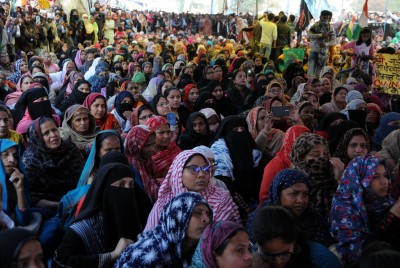New Delhi, Oct 7 : The Supreme Court on Wednesday held the Shaheen Bagh protest perhaps no longer remained the “sole and empowering voice of women”, as the presence of various groups of protesters had possibly resulted in them acting at cross-purposes.
Citing the report of interlocutors, a bench comprising Justices Sanjay Kishan Kaul, Aniruddha Bose and Krishna Murari said that it appeared that an absence of leadership guiding the protest and the presence of various groups of protesters had resulted in many influencers who were acting possibly at cross-purposes with each other.
“Thus, the Shaheen Bagh protest perhaps no longer remained the sole and empowering voice of women, who also appeared to no longer have the ability to call off the protest themselves,” it said.
The top court had appointed two interlocutors – senior advocate Sanjay R. Hegde and Sadhana Ramachandran, who is a mediator trainer, to meet the protesters at the site.
According to their first report, the top court found that the nature of demands was very wide and that it did look difficult to find a middle path towards at least facilitating the opening of the blocked public way.
The second report of the interlocutors suggested that the views reflected in private conversations with the protesters were somewhat different from the public statements made to the media and to the crowd in attendance.
“While the women protesters had sat in protest inside the tent, there was a huge periphery comprising mainly of male protesters, volunteers and bystanders who all seemed to have a stake in the continuance of the blockade of the road,” the bench said.
During the site visit on March 20, before the lockdown to control the outbreak of Covid-19 was imposed, it was revealed that there were about 35-40 ‘takhts’ (platforms) inside the tent and each had 2-3 women occupying the space, resulting in a rough estimate of about 75-100 women inside the tent, as well as 200 or more outside the tent having a connection with the protest.
“While the tent was occupying half of the carriageway, the remaining half of the carriageway had been blocked by creating facilities such as a library, a large model of India Gate and a big metallic three-dimensional map of India located upon a very strong metal scaffolding and anchored by heavy stones, making its removal very difficult,” the top court observed.
Noting that mediation through interlocutors did not produce a solution, the top court said a right to hold meetings on public streets was subject to the control of the appropriate authority regarding the time and place of the meeting and subject to considerations of public order.
“However, as the rule requiring prior permission of the concerned authority did not contain any guidance as to when such permission to hold a public meeting may be refused, it was found that the same conferred arbitrary powers and gave an unguided discretion to the concerned authority, and this was accordingly held to be ultra vires Article 19(1)(b) of the Constitution,” it said.
Disclaimer: This story is auto-generated from IANS service.

